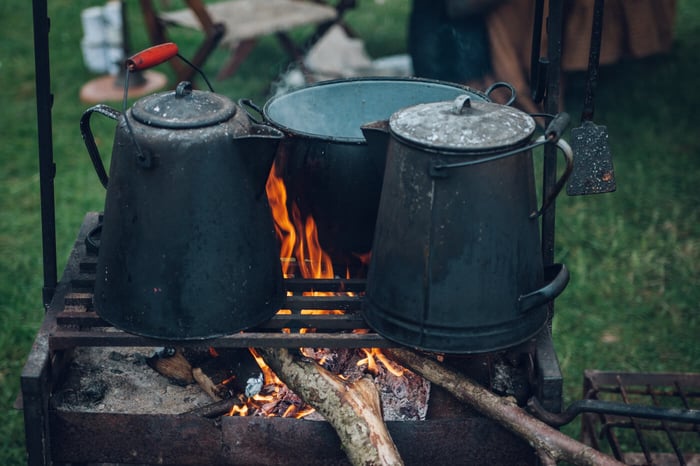There are five things you have control over in your pursuit to brew the perfect cup of coffee. Those are the beans (brand/origin/type/roast), water quality, water temperature, brew method, and grind size. So it should come as no surprise that nearly all of the questions we get from our customers pertain to one of those things, but far and away our most frequently asked question is about what size to grind your beans to.
“I think one of the biggest things that can affect taste is the grind size,” says Kayak Coffee, co-founder, Ben Larson. “A good burr grinder is key and adjusting it to your brew method is important.”
Why a burr grinder? Whether manual or electric, a burr grinder uses either flat or conical burrs to slowly grind the beans into a consistent size. The other main type of grinder is a blade grinder; it's essentially like a blender that slices the beans. Coffee snobs prefer the former because it achieves a more consistent grind size, while the latter produces an uneven grind size. Also, if you are seeking a fine grind consistency, you have to run a blade grinder long enough that it can heat the grinds and give your coffee a burnt taste. Let us repeat: no matter what size you are grinding to, a burr grinder is best for achieving grind consistency, which ultimately has a big effect on flavor.
Here’s our most basic grind-size to brew-method cheat sheet:
Fine: Espresso
Fine/medium: Aeropress
Medium: Drip
Coarse: French Press or percolator
“Espresso is a super fast process so it requires very hot water under pressure with an extra fine grind,” says Ben. “Drip coffee doesn’t allow an especially long contact time for extraction, so a medium grind works well, and it works for pour overs too. Aeropress is kind of a hybrid between an immersion brew and an espresso. The coffee gets immersed in the hot water for a period of time and then pressed through the filter, so I like a medium-fine grind here.”
“Finally, the French press is an immersion style brewing method where the coffee has a long extraction time directly in the hot water. It’s important to use a coarse grind and to limit the contact time to four minutes or less. Too long of an extraction time or too fine of a grind will result in over-extraction.”
If the contact time is too long or the grounds are too fine, the coffee will be over-extracted, resulting in an overly strong or bitter taste. If the contact time isn’t long enough (or the grounds are too coarse for the brewing method) then the coffee will be weak and have a sour taste.
If you have methods you’ve picked up from your favorite coffee shop or even out on the trail or campsite, let us know! And in the meantime, we’ll be working on additional guides to aid in your journey to the perfect cup.




